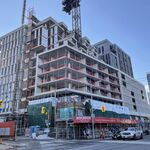salsa
Senior Member
We could learn something, but we won't.
The point is we certainty can implement LRT in a safer manner. I'd hope that's obvious. And not only safer it would become more effecient for its own passengers and automobile users. So the benefit is greater than just safety.
A lot of the time, full grade separation is not feasible or warranted (e.g Finch LRT). In which case, what are your suggestions for implementing it in a “safer manner” compared to the currently design?





